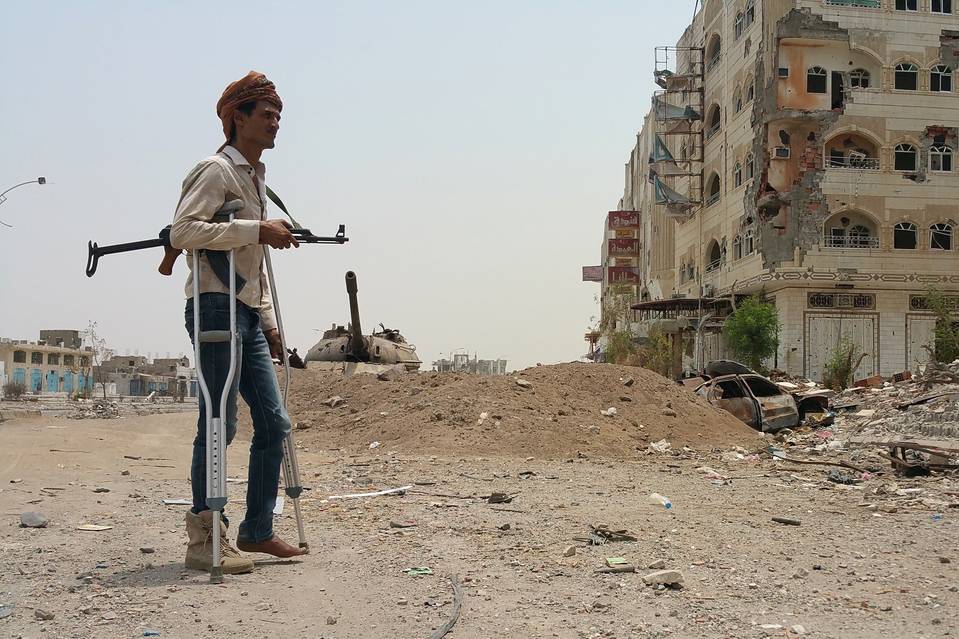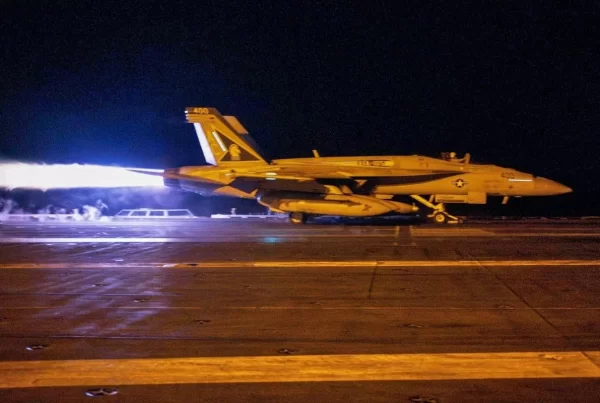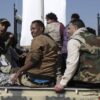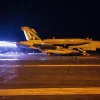By: Yaroslav Trofimov
Concerns arise after Islamist extremists fought alongside Saudi-led coalition and its allies
ADEN, Yemen—To what extent is al Qaeda reaping the rewards of the Saudi-led war in Yemen?
That is an important question for the future of Yemen and for U.S. counterterrorism efforts against the Yemeni branch of the global terror network. The answer depends on who you ask.
Few here deny that al Qaeda has fought alongside the broad alliance that ousted pro-Iran Houthi militias from much of southern Yemen in recent weeks.
Now, preventing the Islamist extremists from leveraging these victories into increased power has become a critical challenge for the Saudi-led coalition that intervened in the Yemen conflict in March. After all, many of the governments in the coalition countries had themselves been repeatedly targeted by al Qaeda in the past.
Houthi and Iranian propaganda routinely describe all of the Saudi-backed forces loyal to Yemen’s exiled President Abed Rabbo Mansour Hadi as affiliated with al Qaeda.
“The al Saud attack on Yemen is aimed at saving al Qaeda’s terrorists from demise and destruction,” senior Houthi leader Youssef al-Fayshi told a Lebanese newspaper.
But according to Yemeni and coalition officials, these militants have played only a relatively marginal role in the recent fighting.
Ahmed Mahdi Fudail, the governor of southern Yemen’s Lahj province, most of which was recently retaken from the Houthis, estimated that Qaeda militants accounted for only 5% of the Yemeni forces allied with the Saudi-led coalition. The rest, he said, was split roughly equally between southern Yemen secessionists, former government troops loyal to Mr. Hadi, and pro-Saudi and ultraconservative Salafi Islamists.
But that small proportion doesn’t mean that al Qaeda isn’t capable of using the current political chaos in southern Yemen to dramatically increase its power. That is what happened in Libya, where al Qaeda-affiliated extremists and then Islamic State have made major advances, benefiting from the infighting among more moderate forces following the downfall of Moammar Gadhafi in 2011.
Even before the current conflict, al Qaeda gathered strength in parts of Yemen, particularly the eastern Hadramawt province—Osama bin Laden’s ancestral home.
U.S. officials consider al Qaeda’s Yemeni branch, known as al Qaeda in the Arabian Peninsula, as one of the world’s most dangerous terrorist organizations and continue drone strikes against its leaders. One of those strikes has killed a commander who took responsibility for the January attack on the Charlie Hebdo magazine in Paris. AQAP also claimed responsibility for the failed 2009 “underwear bomber” plot to blow up a Northwest Airlines flight to Detroit.
Al Qaeda’s first major operation against the U.S. was the deadly bombing of USS Cole in the Aden harbor in 2000.
AQAP also has a long track record of attacks on the Saudi state. They include the failed 2009 assassination attempt that injured Interior Minister Mohammed bin Nayef, now Saudi Arabia’s crown prince.
Yemeni officials and officers from the United Arab Emirates, which sent thousands of troops to southern Yemen as part of the Saudi-led coalition and maintains order in Aden, acknowledge that militants of al Qaeda and Islamic State are present in the area. They deny, however, that the extremists control any part of south Yemen’s main city, with a prewar population of 1.5 million.
In an effort to prove the point, U.A.E. troops recently drove a reporter throughout Aden, including the neighborhood of Tawahi that media reports had said was under al Qaeda control. The area, with its homes damaged by artillery and a statue of Queen Victoria whose face had been used for target practice by the Houthis, was virtually deserted. But no al Qaeda flags or al Qaeda checkpoints could be seen, with only the ubiquitous flag of formerly independent South Yemen flown on the streets.
So far, U.A.E and Saudi forces in Yemen have maintained an informal nonaggression pact with al Qaeda, abstaining from hitting each other, coalition officials say.
“Everywhere in Yemen, you have al Qaeda,” said the Emirati forces’ commander in Aden, Brig. Gen. Nasser al-Oteibi. “What I hear is that they are not attacking the U.A.E. forces because they know that we are not here to take their country or do something bad, and because we are popular.”
Another coalition official put in more bluntly: “We cannot afford to have a second front.”
Daniel Byman, a counterterrorism expert at the Brookings Institution and a former staffer of the U.S. 9/11 Commission, said the U.S. has a similar attitude to some “very nasty elements” among Shiite militias in Iraq, its co-belligerents in the campaign against Islamic State.
“In the Middle East today, there are many very strange bedfellows,” he said.
Many analysts don’t expect this truce with al Qaeda to hold long.
“It’s not in al Qaeda’s interest right now to attack the Gulf forces or anyone fighting against the Houthis,” said Farea al-Muslimi, a Yemen expert at the Carnegie Middle East Center in Beirut. “But at one point, al Qaeda will say—it’s you or us.”
While there has been a string of recent attacks on Yemeni officials in Aden, including the attempted assassination of the provincial governor, it isn’t clear which ones—if any—have actually been carried out by al Qaeda. In a statement on Sept. 5, AQAP denied its involvement, saying these attacks were part of a conspiracy to sow division amid the resistance against the Houthis.
Even without al Qaeda, tribal and political rivalries abound amid the postwar chaos here, Yemeni officials say.
“In Yemen, there is no army, no government, no state—just militias,” said the governor targeted by the assassination bid, Naif al Bakri. “We are just coming out of the war.”
Al Qaeda, Mr. Bakri added, has little chance of taking root in Aden, a cosmopolitan city with a proud culture that, he reminded, had the Arabian peninsula’s first cinema and first stadium under British rule a century ago.
The head of President Hadi’s office in Aden, Mohammed Ali Maram, also argued that al Qaeda’s threat in the south is much exaggerated. Whenever he investigated reports of militants taking various locations, such as the capital of the neighboring Abyan province, in recent weeks, the information always proved to be untrue, he added.
“There is no place where we can say it’s for al Qaeda, we cannot go there,” Mr. Maram said. “They are not something we can be afraid of. They are not coming from other places, they are citizens here. We know them, we know everything about them.”
Hashem al-Sayid, a leader of anti-Houthi forces in Aden, wasn’t as complacent. The presence of Emirati troops, he said he hoped, would allow Aden to continue keeping al Qaeda’s militants at bay.
“Some of them participated in the resistance against the Houthis, and we accepted them as part of our coalition to restore legitimacy,” Mr. Sayid said “But after they came to Aden, some of them tried to raise their own black flags. Our people did not accept that and chased them away. Now we know we cannot trust them.”






